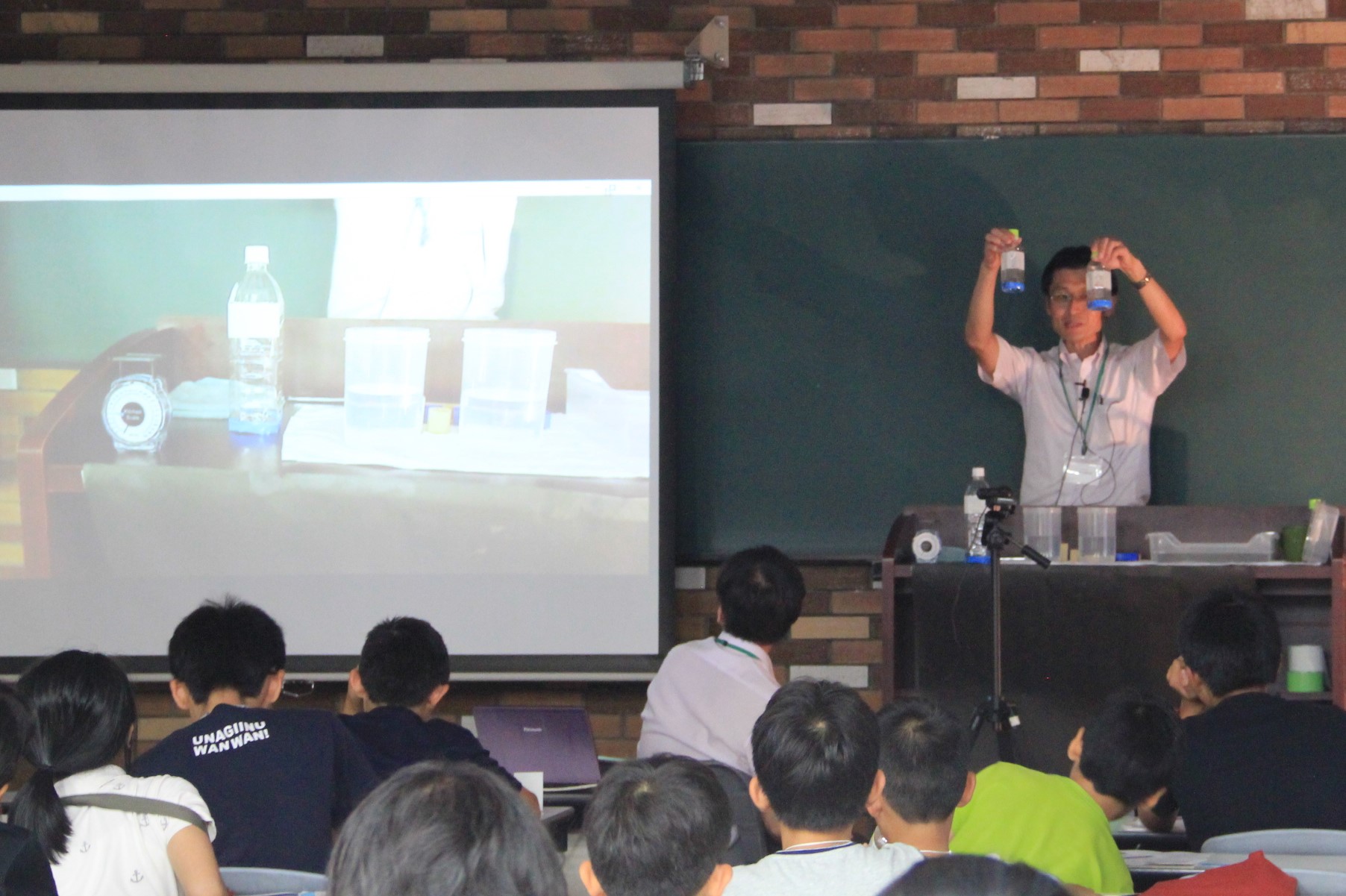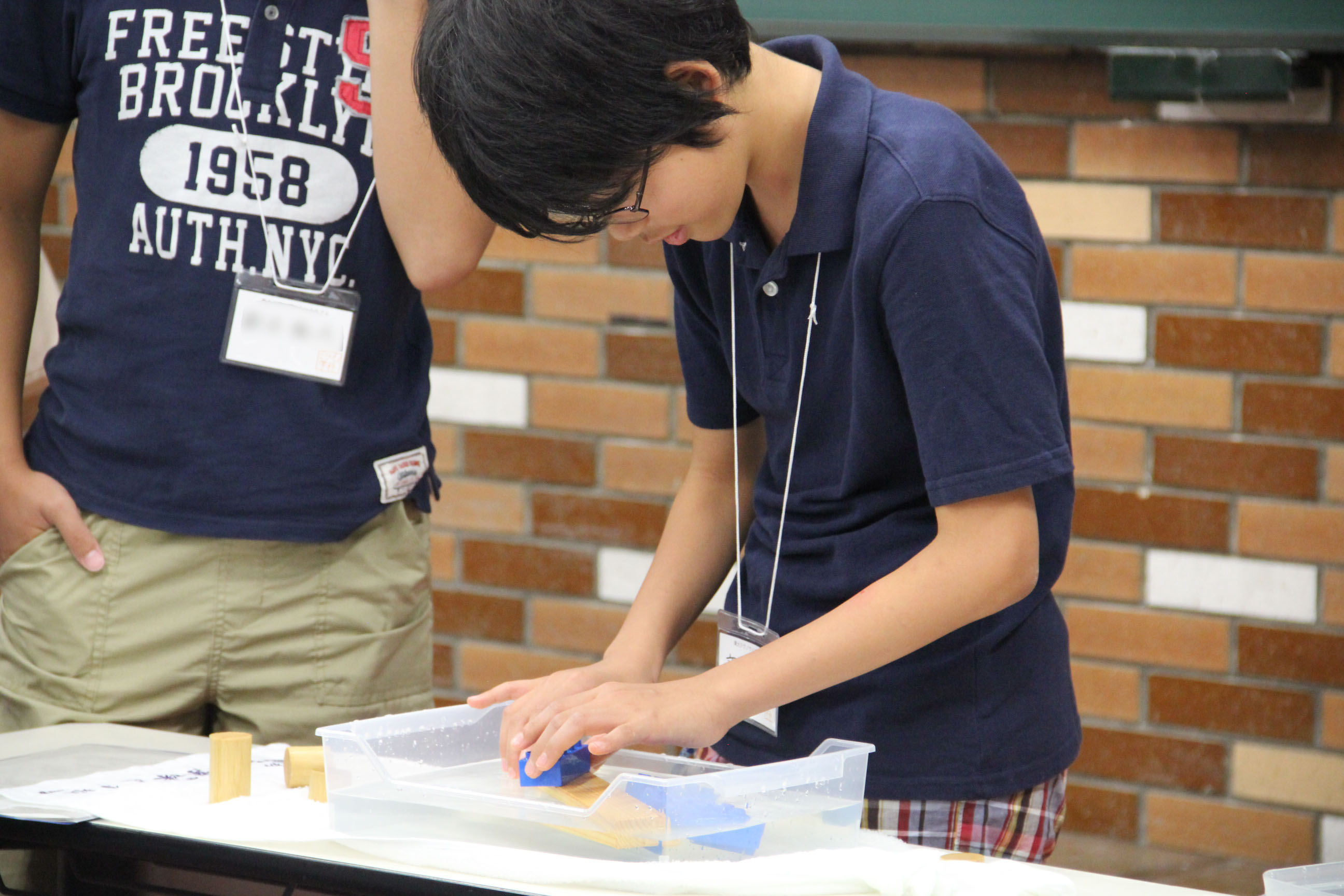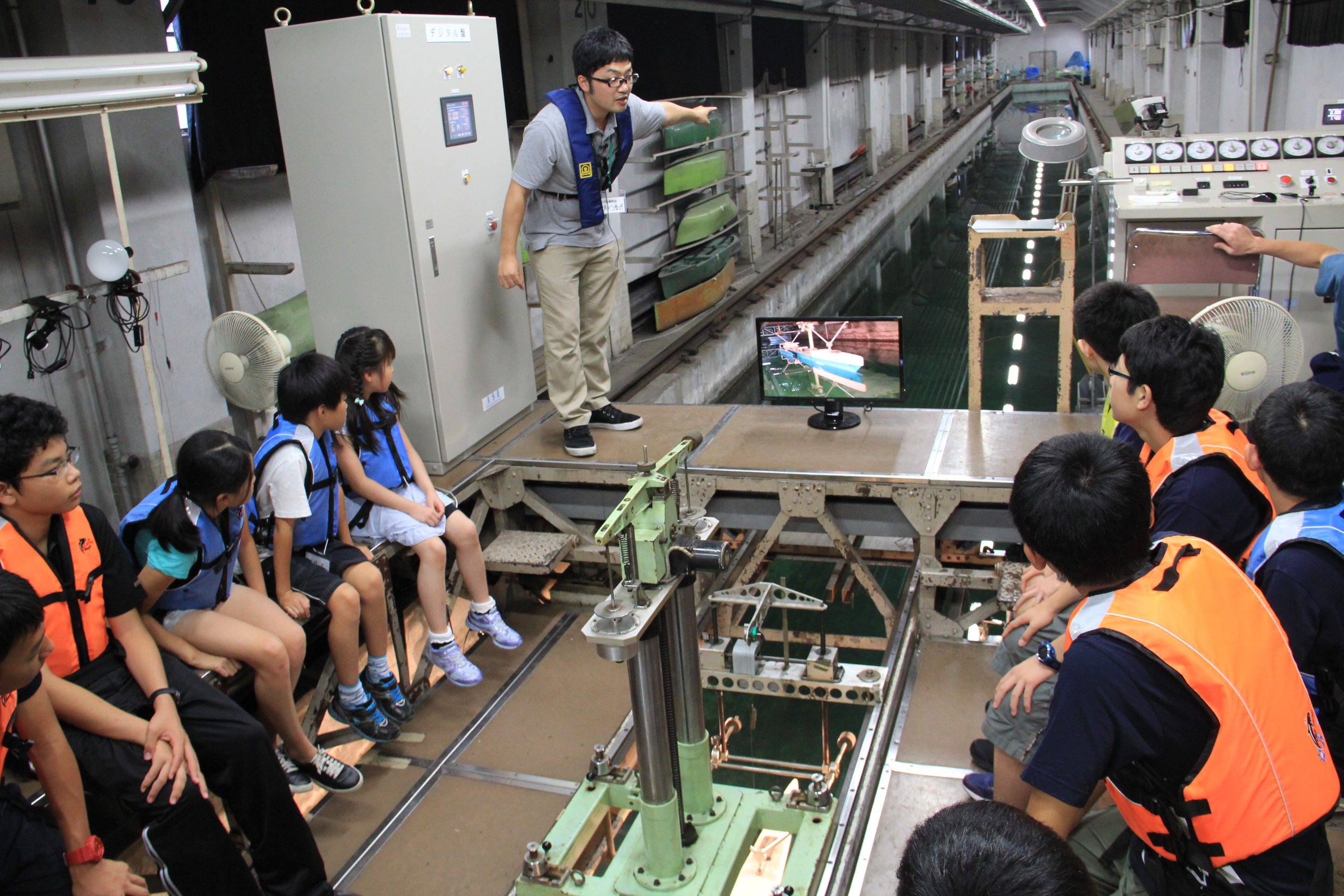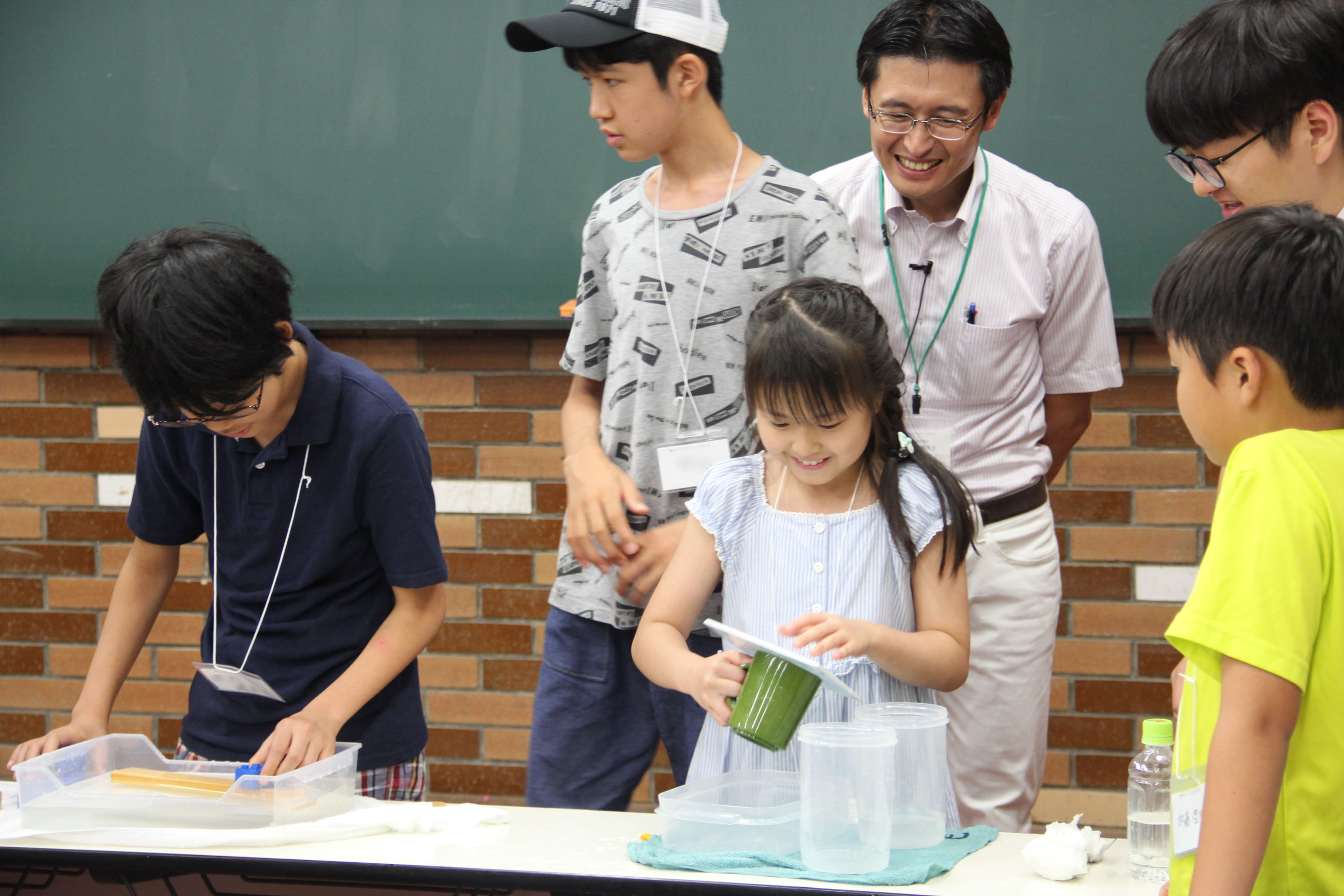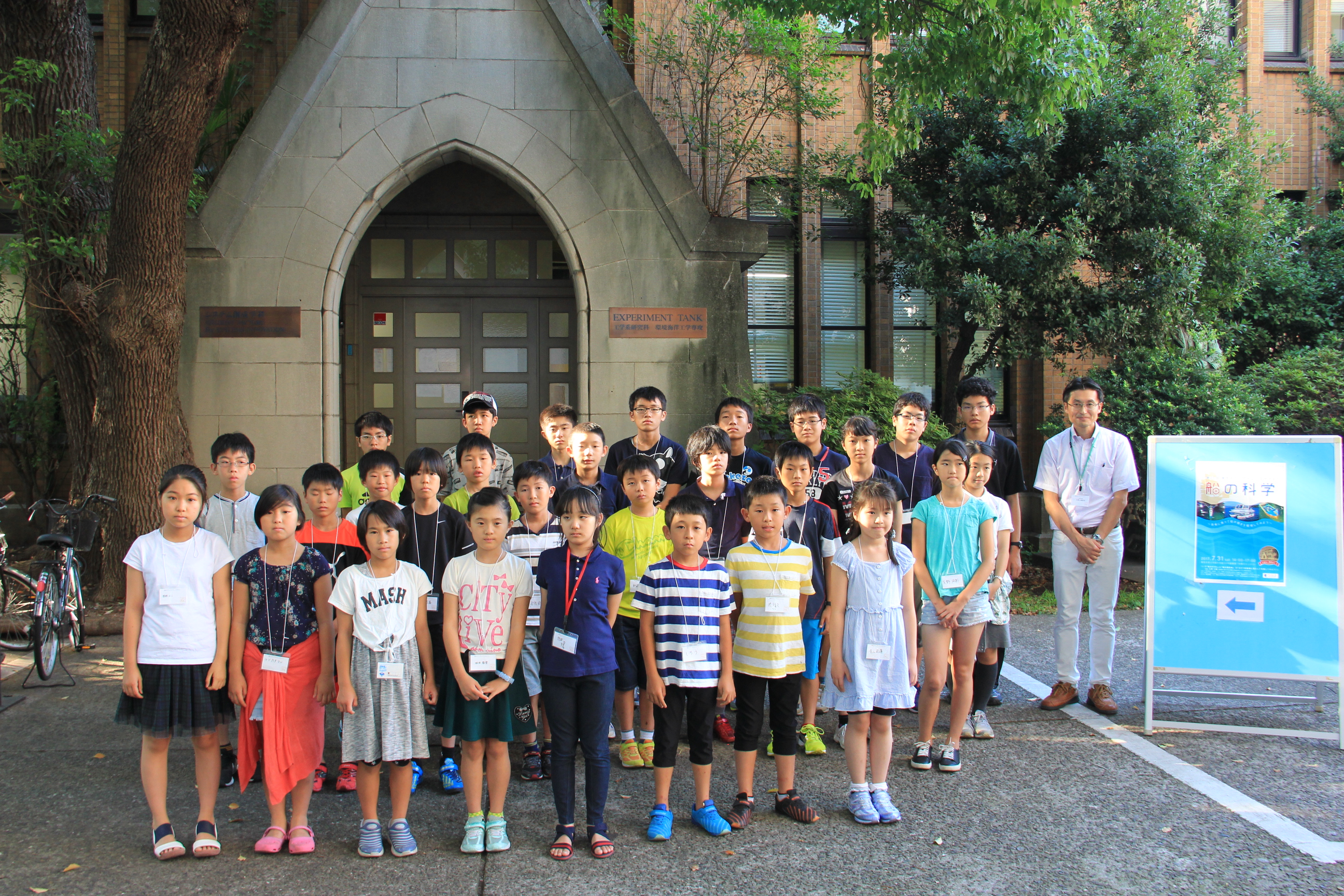Boeing Higher Education Program
BoeingHigherEducationProgram
-
The 75th Komaba Festival Participation Project “Want to Know More about the World of the Faculty of Engineering

The 75th Komaba Festival was held from November 22 to 24, 2024, at the University of Tokyo’s Koma...
November 22, 2024 -
The 34th UTokyo Techno-Science Café’s Report

"Experience Cutting-edge Research in Chemistry, Life Sciences, and Physics." On August 5, 2023,...
August 05, 2023 -
Techno-Science Café’s Extra Edition Report

Techno-Science Café’s Extra Edition Engineering x Gal "Engineering Onimori Technology↑↑ Wireles...
November 03, 2022 -
The 32th UTokyo Techno-Science Café Report

The 32th Techno-science café, “Construction Work Using LEGO Brick” was held on October 19, 2019. ...
October 19, 2019 -
The 31th UTokyo Techno-Science Café Report

The 31st Tokyo University Techno-Science Café, "Useful Surface Science to Know -Science of Wettin...
August 03, 2019 -
The 30th UTokyo Techno-Science Café Report

The 30th Techno-science café, “What is the strength? Let’s make a pasta bridge” was held on Augus...
August 02, 2019 -
The 25th UTokyo Techno-Science Café Report

The 25th Techno-Science Café was held on July 31, 2017. About 30 students, mainly elementary scho...
July 31, 2017 -
The 24th UTokyo Techno-Science Café Report

On July 28, 2017, the 24th Techno-Science Cafe was held at the building 11 of the Faculty of Engi...
July 28, 2017 -
The 23rd UTokyo Techno-Science Café Report

The 23rd Techno-Science Café was held on December 11, 2016. About 20 students mainly from element...
December 11, 2016 -
The UTokyo Techno-Science Café Special Version Report

The 22nd Techno-Science Café, “Design and Manufacturing” was held again on August 10, 2016. About...
August 10, 2016 -
The 22nd UTokyo Techno-Science Café Report

The 22nd Techno-Science Café, “Design and Manufacturing” was held on July 25, 2016. About 30 stud...
July 25, 2016 -
The 21st UTokyo Techno-Science café Report

The 21st Techno-science café, “Let’s fly out to the Space!” was held on March 19, 2016. About 50 ...
March 19, 2016 -
The 18th UTokyo Techno-Science café Report

The 18th Techno-science cafe was held on March 7, 2015, and the theme was "Making Safe Cities: Cr...
May 07, 2015 -
The 14th UTokyo Techno-Science café Report1

The 14th Techno-science Cafe was held on November 10. The theme was "The frontier technology, inn...
November 10, 2013 -
The 13th UTokyo Techno-Science café Report1

The 13th Techno-science café was held on 28th July. The theme was “The batteries and the future o...
July 28, 2013 -
The 13th UTokyo Techno-Science café Report2

Techno Science Cafe ‘The Future of Battery and EV’ was held on 28th, July, 2013 in the University...
July 28, 2013 -
The 11th UTokyo Techno-Science café Report2

On the 24th of March 2013 was held a TechnoScience Café "Engineering Dojo" at the University of ...
March 24, 2013 -
The 11th UTokyo Techno-Science café Report1

The 11th Todai Techno-Science café was held on 24th Mar. This time its theme was “Engineering sch...
March 24, 2013
The 25th UTokyo Techno-Science Café ReportJuly 31, 2017 工学系11号館講堂

The 25th Techno-Science Café was held on July 31, 2017. About 30 students, mainly elementary school students, participated in this event. The program was basically composed of two main parts. First, Assoc. prof. Kitazawa, Department of Systems Innovation, gave an explanation about how ships can float on the water by using simple experimental equipment and fundamental scientific principles of ships. Second, participants visited Hull Form Testing Tank in the campus and they saw how the hull forms are tested.
2017年7月31日、第25回東大テクノサイエンスカフェが開催されました。小学生を中心に、31人の児童が参加しました。プログラムは大きく分けて2部構成で、前半はシステム創成学専攻の北澤大輔准教授に身近な実験道具を使い、船がどのように浮かぶのかについて簡単な実験を行いながら、船についての基本的な説明や最新の船の紹介をしていただきました。後半は、キャンパス内にある船型の性能等を測定するための船型試験水槽を見学しました。
In the lecture, participants learned the principle of how a huge ship floats. They also did three kinds of experiments. The first experiment was done by using PET bottles and weights. It was to put two different weights in pet bottles of the same size, and then participants observed which pet bottle submerges deeper in the water. The second experiment was to put the same weight in bottles that have different sizes, and then they observed which pet bottle submerge deeper in the water. The result was that the heavier and the smaller sized bottle submerged well.
前半の講義の中では、大きい船がどのような原理によって浮かぶのかについて学んだ後、三つの実験を参加者の児童の皆さんが実際に行いました。一つ目は、サイズが同じペットボトルの中に違う重さの重りを入れ、水槽の中に浮かべて、どちらが沈むかを実験しました。二つ目はサイズが違うペットボトルの中に同じ重さの重りを入れて、水槽の中に浮かべたらどちらが沈むかを実験しました。重りは重いほど、サイズは小さいほど沈むことが分かりました。
The third one was buoyancy experiment that was done with a wood block and plastic toy blocks. We placed the wood block on the water tank. Then, the participants put some plastic blocks on top of the wood block. Participants adjusted the location of the blocks when they placed plastic blocks on the wood block. Though many children could put 3 blocks, there were only few challengers who successfully put 4 plastic blocks on the wood block because the wood block was easily tilted when the fourth plastic block was put. They enjoyed challenging this experiment very much.
三つ目の実験は木のブロックとプラスチックのブロックを使った浮力実験でした。この浮力実験では、水槽の中に細長い木のブロックを入れて、その上にプラスチックのブロックをいくつ乗せられるかを調べる実験でした。児童の皆さんがプラスチックのブロックの位置を調整しながら載せました。三つまでは容易く載せましたが、四つ乗せると、木のブロックが傾いてしまい、四つまで乗せることに成功できた児童は少なかったです。
Besides of the lectures and experiments, the children also went to Hull Form Testing Tank building on campus. The equipment measures the performance of ship hull. First, the participants worn lifejacket and received safety instructions and a lecture on what they are going to observe. After that, they rode a railway bogie and waited till the device was working. When The big railway bogie starts moving, a model ship also start making waves. The children were fascinated into the phenomenon and process of how we measure the performance of the model ship.
また、後半には本郷キャンパスにある船型試験水槽で船型の性能を測定する水槽を見学しました。児童の皆さんはまず、安全のためライフジャケットを着て水槽の使い道と安全事項などについての説明を聞きました。その後、水槽にある台車に乗り、実験が始まるのを待ちました。大きい台車が動き、模型船が作る波を見て、模型船の性能が測定される過程を興味深く見ました。
The children learned the science of ship and performed several experiments through participating this event. They also saw hull form testing equipment and even rode on it. They looked happy because it was a unique experience for them.
参加者の子供たちは今回のサイエンスカフェを通じて、船の科学について説明を聞き、浮力実験を実際に行いました。また、実際に行う船型性能実験を見学することも出来ました。子供たちは普段出来ない経験ができで、とてもうれしそうでした。
By taking a group photo in front of the Hull Form Testing Tank building, Techno-Science Café was finished. I would very happy if the children get more interest in the ship and they can have fond memories through this event. It was a good experience for me how to teach them and help them to get more interested in science of ship.
School of Engineering, Department of Systems Innovation, Park Sang Gyu (M1)
船型試験水槽の建物の前で、集合写真を撮ることでサイエンスカフェは終わりました。このイベントを通じて、子供たちの船への興味が高まり、科学についていい思い出を持つことができましたら、とてもうれしいと思いました。
工学系研究科システム創成学専攻修士1年パクサンギュ
